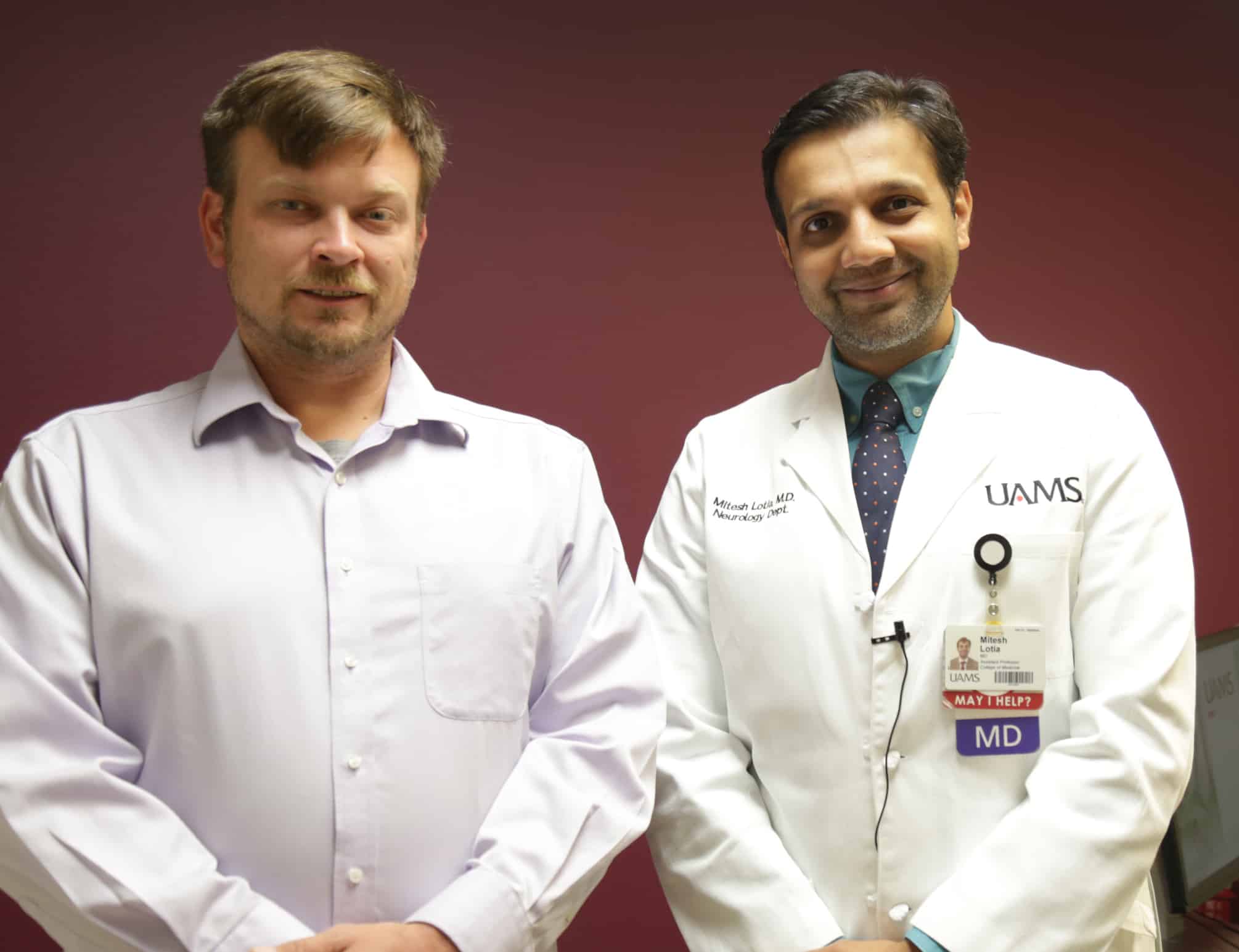Sherwood Man Back on Track after Botox for Painful Neck Condition
| Two years ago, James Calhoun was out of work, his neck twisting painfully to one side because of a neurological condition called dystonia. Today, he’s working in health care, finishing up an associate’s degree and applying to nursing school — his life back on track.
Calhoun, 35, of Sherwood has been living with uncontrollable muscle contractions since 2014. Dystonia is a condition in which a part of the body tends to twist or turn involuntarily because the brain is sending continuous signals to the muscles. It commonly affects the hands and neck, and sometimes an entire body
“When I was driving to work, I would notice that I would be leaning my head to one side,” Calhoun said. “Eventually, it got worse. It got to where my head was on my shoulder and my chin was on my shoulder.”
Calhoun was able to identify the cause fairly quickly because the condition runs in his family. He saw doctors who injected him with Botox, a common treatment for dystonia that relaxes the overstimulated muscles, but with no results and was referred to UAMS Movement Disorders Clinic to consider a brain surgery
“I was in pain all day every day,” Calhoun said. “But in 2017, I met Dr. Lotia, and he changed my world. I can drive now; I can watch TV; I have a full-time job as a nurse tech at a hospital. I can do all of the normal things that people do that you take for granted — until you can’t do them.”
Calhoun came to the Movement Disorder Clinic at UAMS, where he worked with Mitesh Lotia, M.D. Lotia was able to treat Calhoun’s “treatment-resistant” dystonia because he has specialized, detailed training in the condition. In addition to the rest of his medical training, Lotia completed a two-year fellowship in dystonia and other movement disorders at Baylor College of Medicine in Houston.
“Most of the patients who are referred to us as ‘treatment-resistant’ have just not been given the right treatment,” Lotia said. “We do a detailed analysis as part of their first visit where we really isolate the muscle groups that are affected and identify the injection sites and injection amounts that will have the most benefit.”
Each injection lasts for about three to four months.
“With cervical dystonia, which is what James has, 80% of patients have some sort of neck pain, which is often disabling,” Lotia said. “With the right Botox treatment, not only does movement in the neck improve, there is complete resolution of pain as well.”
Calhoun gets two injections on one side of his neck and one on the other. Lotia also uses a method that includes smaller needles, so there is less pain than the traditional approach. Still, some patients don’t particularly like the injections, but Calhoun endures them with a stiff upper lip.
“The only ‘side effect’ for me is not being in pain,” Calhoun said. “I can’t ask for much more than that.”
Calhoun is at ease when he interacts with Lotia. He is interested in the medical details, which he is learning about at work and soon will also be learning more about in school. They talk like peers, clearly having developed a rapport.
“If it wasn’t for you,” Calhoun said, searching for the words to express his gratitude to Lotia, “I don’t know. I don’t know how to tell you. I’m so glad to be out of pain. I couldn’t be more thankful.”


